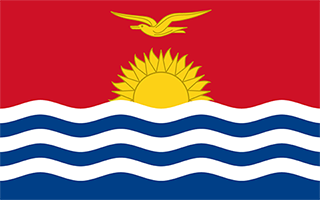Facts and Data
Webpages:
Official Unesco Page
Protectedplanet.net
Basis Data:
Unesco World heritage since: 2010
Size of heritage: 40,825,000 ha
Coordinates:
Longitude: -171,143°
Latitude: -2,350°
Summary
The Phoenix Island Protected Area (PIPA) is a 408,250 sq.km expanse of marine and terrestrial habitats in the Southern Pacific Ocean. The property encompasses the Phoenix Island Group, one of three island groups in Kiribati, and is the largest designated Marine Protected Area in the world. PIPA conserves one of the world's largest intact oceanic coral archipelago ecosystems, together with 14 known underwater sea mounts (presumed to be extinct volcanoes) and other deep-sea habitats. The area contains approximately 800 known species of fauna, including about 200 coral species, 500 fish species, 18 marine mammals and 44 bird species. The structure and functioning of PIPA's ecosystems illustrates its pristine nature and importance as a migration route and reservoir. This is the first site in Kiribati to be inscribed on the World Heritage List.
Location on Map
Show bigger map on Openstreetmap
Phoenix Islands Protected Area: A Pristine Paradise in Kiribati
The Phoenix Islands Protected Area (PIPA) is a UNESCO World Heritage site located in the Republic of Kiribati, an island nation in the central Pacific Ocean. Spanning an area of approximately 408,250 square kilometers, PIPA is one of the largest marine protected areas in the world. Its coordinates, S3 38 59 W172 51 27, place it in the heart of the Pacific, where it encompasses eight coral atolls and two submerged reef systems.
Ancient History and Cultural Significance
The Phoenix Islands have a rich history dating back thousands of years. The first settlers arrived around 2000 BCE, and the islands have been inhabited ever since. The indigenous people of Kiribati, known as I-Kiribati, have a deep cultural connection to the land and sea, considering them sacred and integral to their way of life.
These islands were named after the British East India Company's vessel, the Phoenix, which discovered the archipelago in 1823. Throughout the 19th and 20th centuries, the islands were subject to various colonial powers, including the United Kingdom and the United States. Kiribati gained independence in 1979 and has since taken significant steps to protect its natural and cultural heritage.
Preserving Biodiversity and Ecosystems
Recognizing the exceptional ecological value of the Phoenix Islands, Kiribati established the Phoenix Islands Protected Area in 2008. This marine protected area was designed to safeguard the pristine coral reefs, seamounts, and deep-sea habitats found within its boundaries.
PIPA is home to an astonishing array of marine life, including over 200 coral species, 500 fish species, and numerous endangered species such as sea turtles, sharks, and seabirds. The area also serves as a vital breeding ground for migratory species, making it a globally significant hotspot for biodiversity.
Conservation Efforts and Sustainable Management
Since its establishment, PIPA has been managed by the Phoenix Islands Protected Area Conservation Trust (PIPA Trust) in collaboration with the Kiribati government. Their primary goal is to ensure the long-term conservation and sustainable use of the area's natural resources.
Strict regulations are in place to protect the fragile ecosystems of PIPA. Fishing and other extractive activities are heavily regulated, with only limited and carefully monitored fishing allowed in designated zones. This approach aims to maintain the delicate balance of the marine ecosystem while providing sustainable livelihoods for local communities.
Challenges and Future Outlook
Despite the efforts to protect PIPA, the area faces several challenges. Climate change, including rising sea levels and ocean acidification, poses a significant threat to the delicate coral reefs and marine life. Additionally, illegal fishing and the potential for overfishing remain ongoing concerns.
However, the commitment of the Kiribati government, the PIPA Trust, and international partners to the preservation of this unique World Heritage site offers hope for its future. Through continued research, monitoring, and community engagement, PIPA strives to be a model for sustainable marine conservation and a testament to the importance of protecting our planet's natural wonders.
Visiting the Phoenix Islands Protected Area is a rare opportunity to witness the untouched beauty of a pristine marine ecosystem. It serves as a reminder of the importance of preserving our natural heritage for future generations and the urgent need for global action to protect our oceans.
